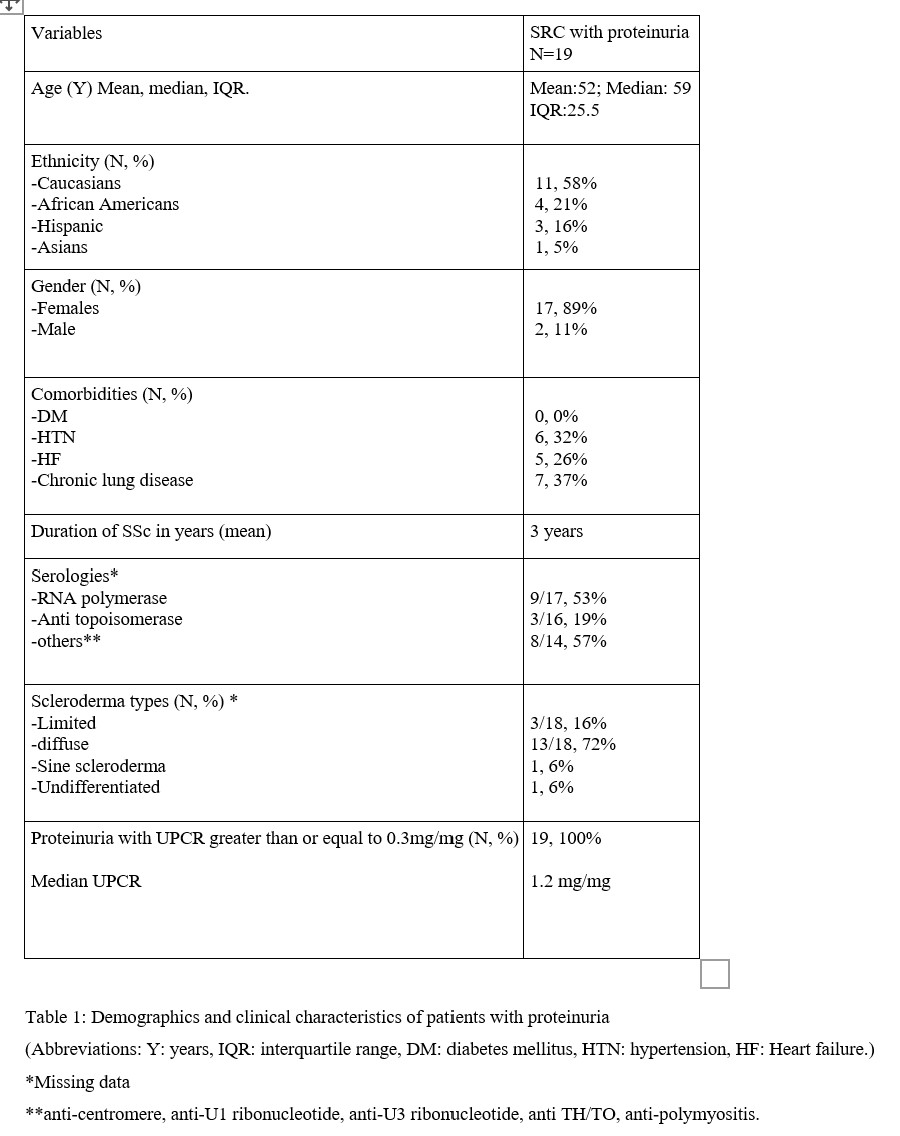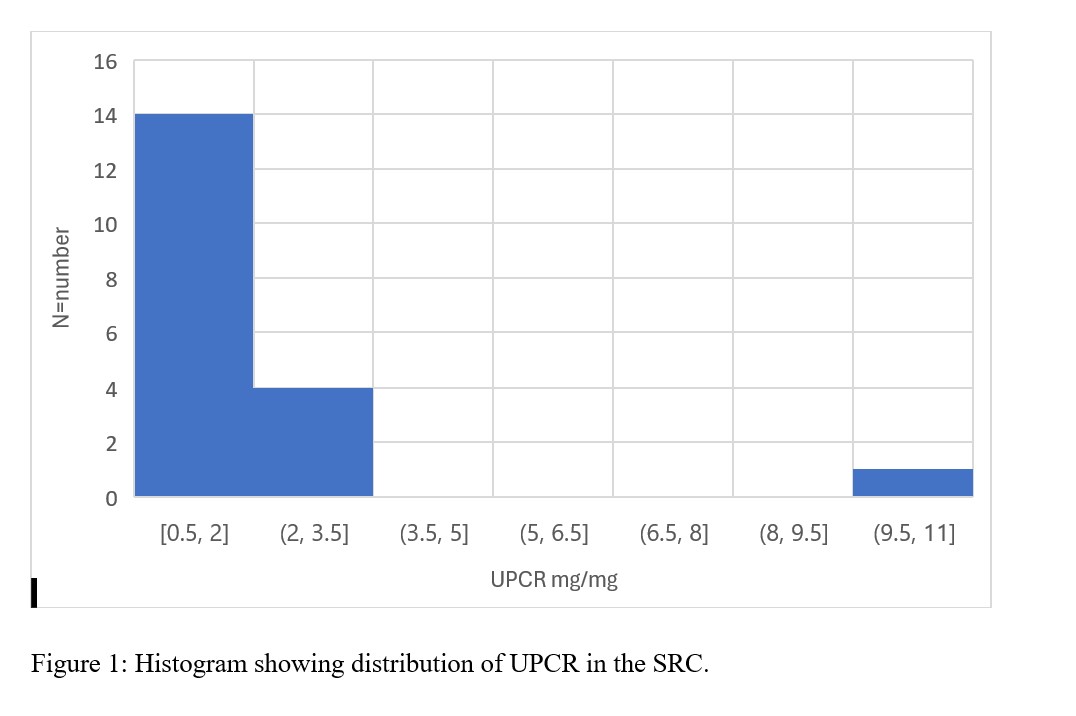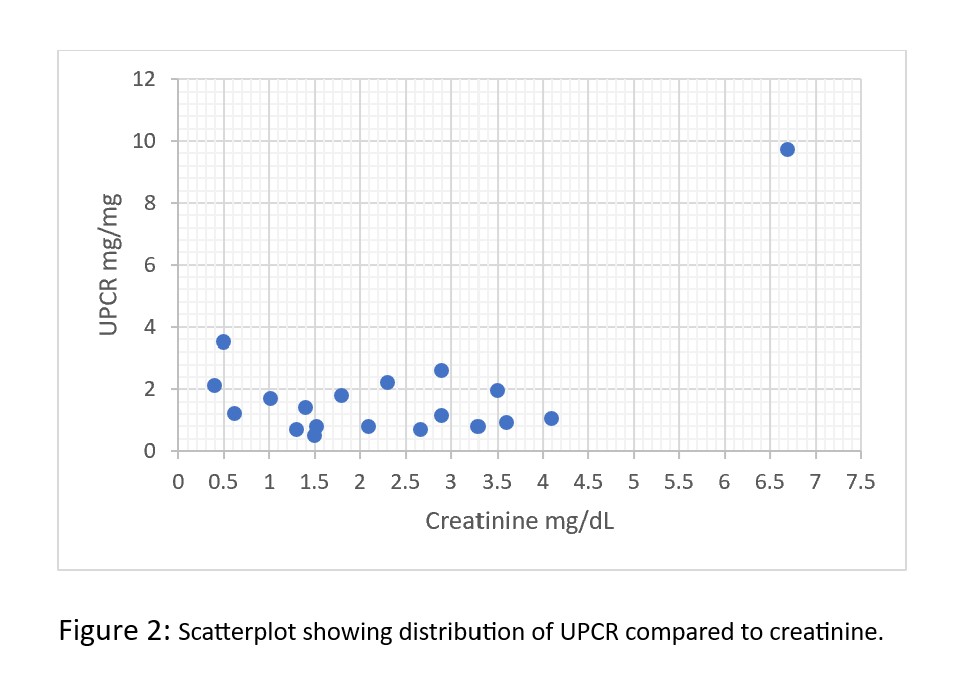Session Information
Session Type: Poster Session B
Session Time: 10:30AM-12:30PM
Background/Purpose: Scleroderma renal crisis (SRC) is a rare but life-threatening complication of systemic sclerosis (SSc), characterized by malignant hypertension and acute kidney injury (AKI). Proteinuria when present at the time of SRC is usually observed to be mild and less than 2 grams/day. However, there is a paucity of data examining the distribution of proteinuria in SRC. In this analysis, we aim to examine the distribution of proteinuria in patients at the time of SRC and look at the correlation of proteinuria with creatinine.
Methods: We retrospectively obtained data from two centers: Albany Medical Center and Medstar Georgetown University Hospital, of patients with proteinuria during SRC between 2004-2018. Proteinuria was defined as spot urine protein-to-creatinine ratio (UPCR) equal to or exceeding 0.3 mg/mg. The spot UPCR roughly correlates to the 24-hour protein excretion (g/day/1.73 m2). Histogram and scattered plot were obtained showing distribution of proteinuria and correlation with renal function respectively.
Results: A total of 60 patients with SRC were included from the two centers. 19/60 patients had spot UPCR ratio that was checked at the time of SRC diagnosis and of these, all had proteinuria as defined above. 74% (14/19) of the cohort had UPCR < 2 mg/mg while 26% (5/19) had > 2 mg/mg (Fig 1). The median UPCR in the cohort was 1.2 mg/mg. There was no correlation between proteinuria and creatinine (Fig 2).
Mean age was 52 years and 89% (17/19) were females. The majority of the cohort (58 %,11/19) was Caucasian. The mean duration of SSc was 3 years. None of these patients had alternate causes of proteinuria such as diabetes mellitus (DM). Pulmonary involvement was most commonly observed. 53% (9/17) patients had positive anti-RNA polymerase III (Table 1). All the patients were managed with angiotensin converting enzyme inhibitor (ACE inhibitor). One-third of patients required hemodialysis at the time of diagnosis of SRC. 26% (5/18) remained dialysis-dependent at the end of 1 year.
Conclusion: Proteinuria is common in SRC. While most data suggest that proteinuria < 2 grams is commonly seen in SRC, our analysis indicates that levels exceeding 2 grams can also occur. However, this finding is limited by the small sample size and selection bias of those patients for whom UPCR was checked. Further, there was absence of 24-hour urine protein collections to corroborate the data. A future study would be helpful to further investigate this.
To cite this abstract in AMA style:
Javed A, Grigoryan L, Luta A, Wajid S, Shapiro L, Steen V, Mehta S. Distribution of Proteinuria in Scleroderma Renal Crisis: A Multi-Center Study [abstract]. Arthritis Rheumatol. 2024; 76 (suppl 9). https://acrabstracts.org/abstract/distribution-of-proteinuria-in-scleroderma-renal-crisis-a-multi-center-study/. Accessed .« Back to ACR Convergence 2024
ACR Meeting Abstracts - https://acrabstracts.org/abstract/distribution-of-proteinuria-in-scleroderma-renal-crisis-a-multi-center-study/



